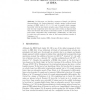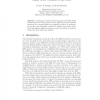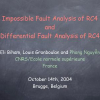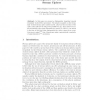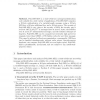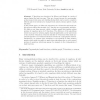FSE
2005
Springer
15 years 6 months ago
2005
Springer
In this paper, we describe a sequence of simple, yet efficient chosen-plaintext (or chosen-ciphertext) attacks against reduced-round versions of IDEA (with 2, 2.5, 3, 3.5, and 4 ro...
110
Voted
FSE
2005
Springer
15 years 6 months ago
2005
Springer
Abstract. Algebraic attacks on stream ciphers apply (at least theoretically) to all LFSR-based stream ciphers that are clocked in a simple and/or easily predictable way. One intere...
FSE
2005
Springer
15 years 6 months ago
2005
Springer
In this paper we define small scale variants of the AES. These variants inherit the design features of the AES and provide a suitable framework for comparing different cryptanaly...
84
Voted
FSE
2005
Springer
15 years 6 months ago
2005
Springer
This paper presents the results of a preliminary analysis of the stream cipher Mugi. We study the nonlinear component of this cipher and identify several potential weaknesses in it...
FSE
2005
Springer
15 years 6 months ago
2005
Springer
129
click to vote
FSE
2005
Springer
15 years 6 months ago
2005
Springer
In this paper we present a distinguisher targeting towards irregularly clocked filter generators. The attack is applied on the irregularly clocked stream cipher called LILI-II. LI...
69
Voted
FSE
2005
Springer
15 years 6 months ago
2005
Springer
Poly1305-AES is a state-of-the-art message-authentication code suitable for a wide variety of applications. Poly1305-AES computes a 16-byte authenticator of a variable-length messa...
87
Voted
FSE
2005
Springer
15 years 6 months ago
2005
Springer
T-functions were introduced by Klimov and Shamir in a series of papers during the last few years. They are of great interest for cryptography as they may provide some new building ...
110
Voted
FSE
2005
Springer
15 years 6 months ago
2005
Springer
In this paper we present a new class of stream ciphers based on a very simple mechanism. The heart of our method is a Feedback with Carry Shift Registers (FCSR) automaton. This au...
84
Voted
FSE
2005
Springer
15 years 6 months ago
2005
Springer
T-function is a relatively new cryptographic building block suitable for streamciphers. It has the potential of becoming a substitute for LFSRs, and those that correspond to maximu...
